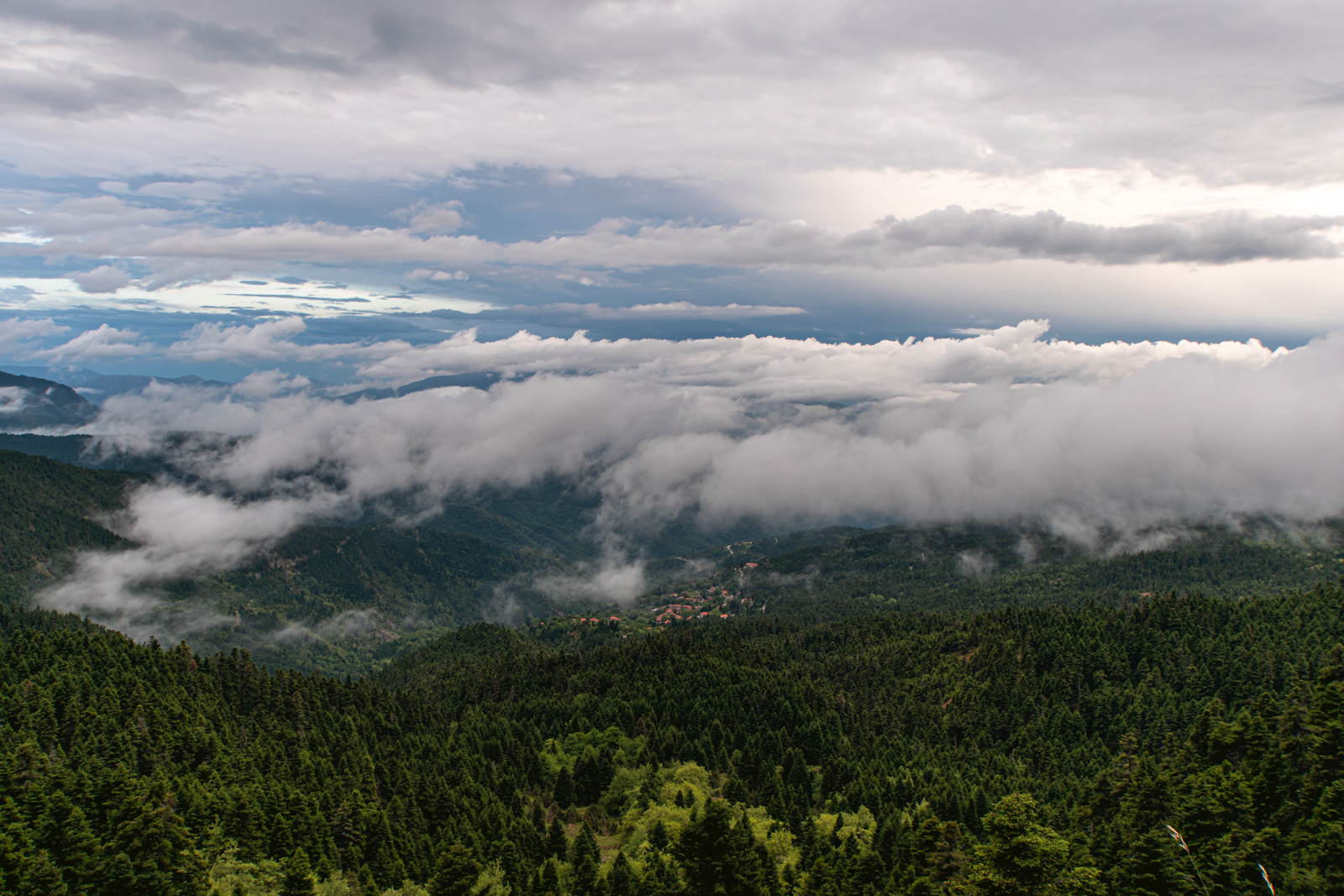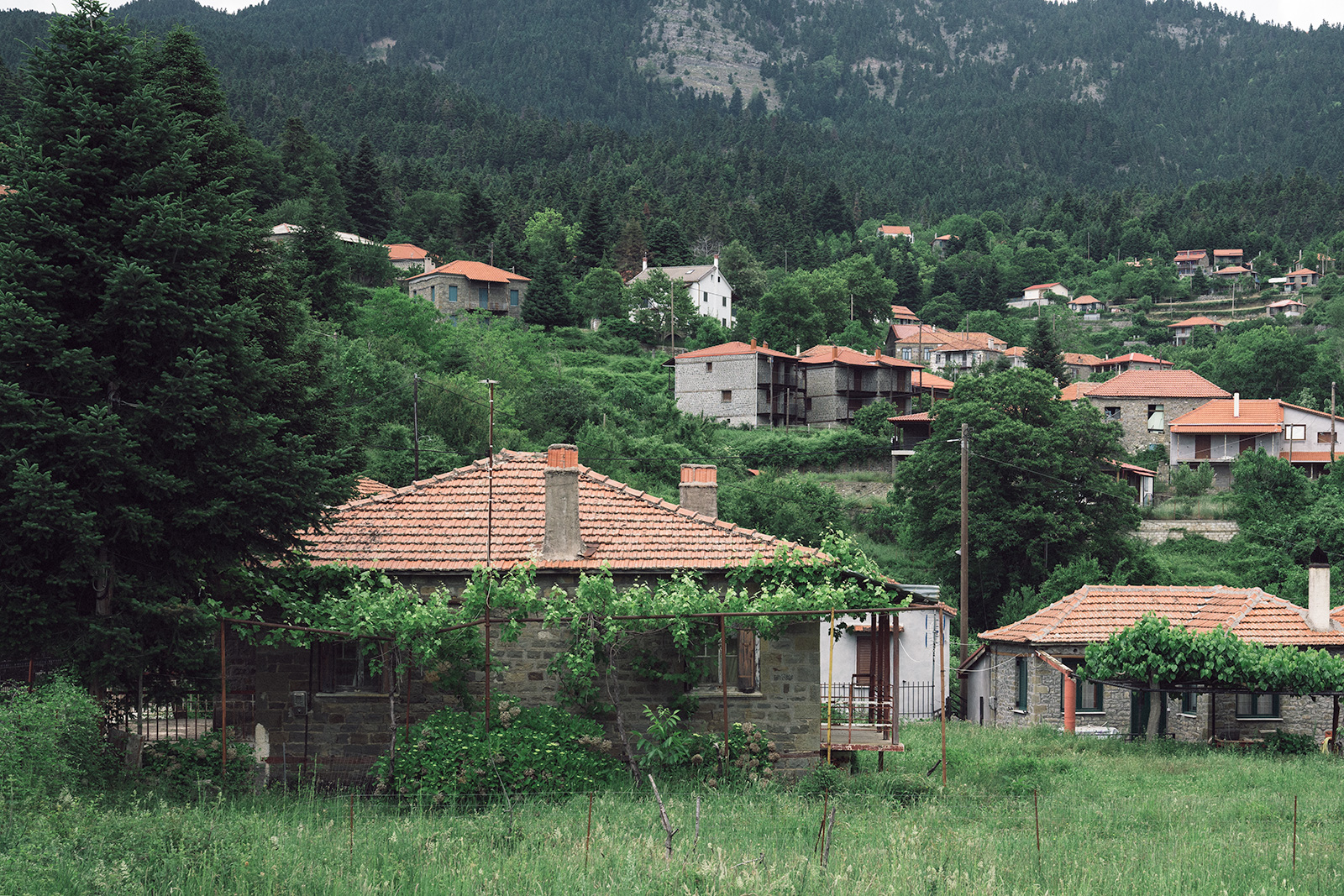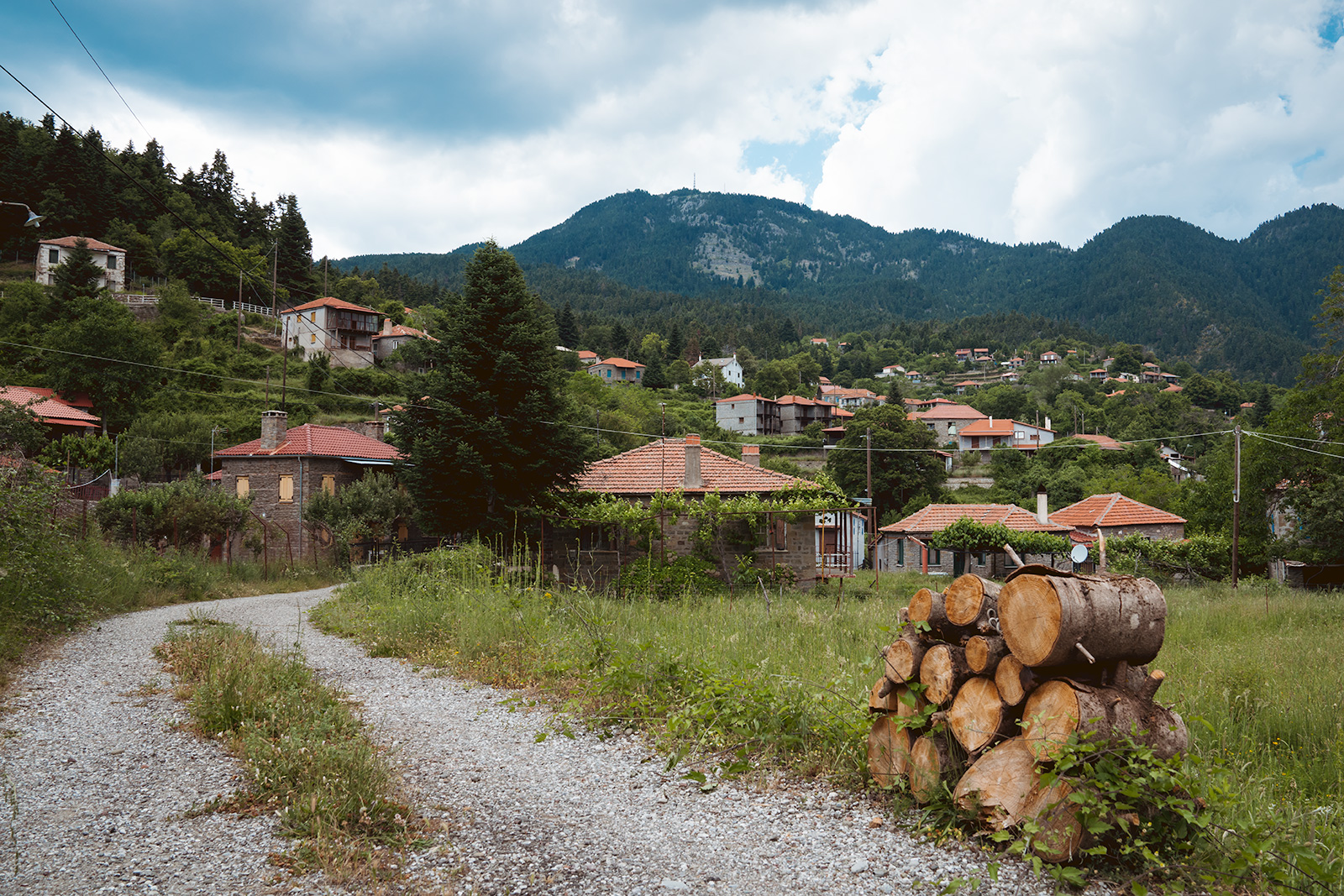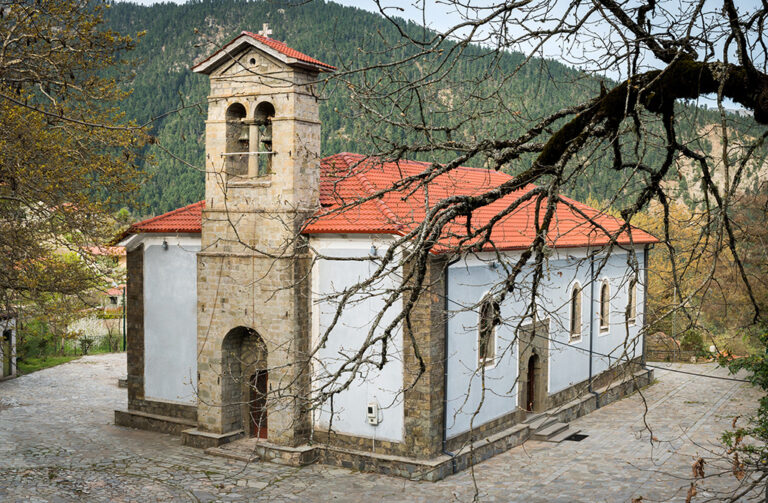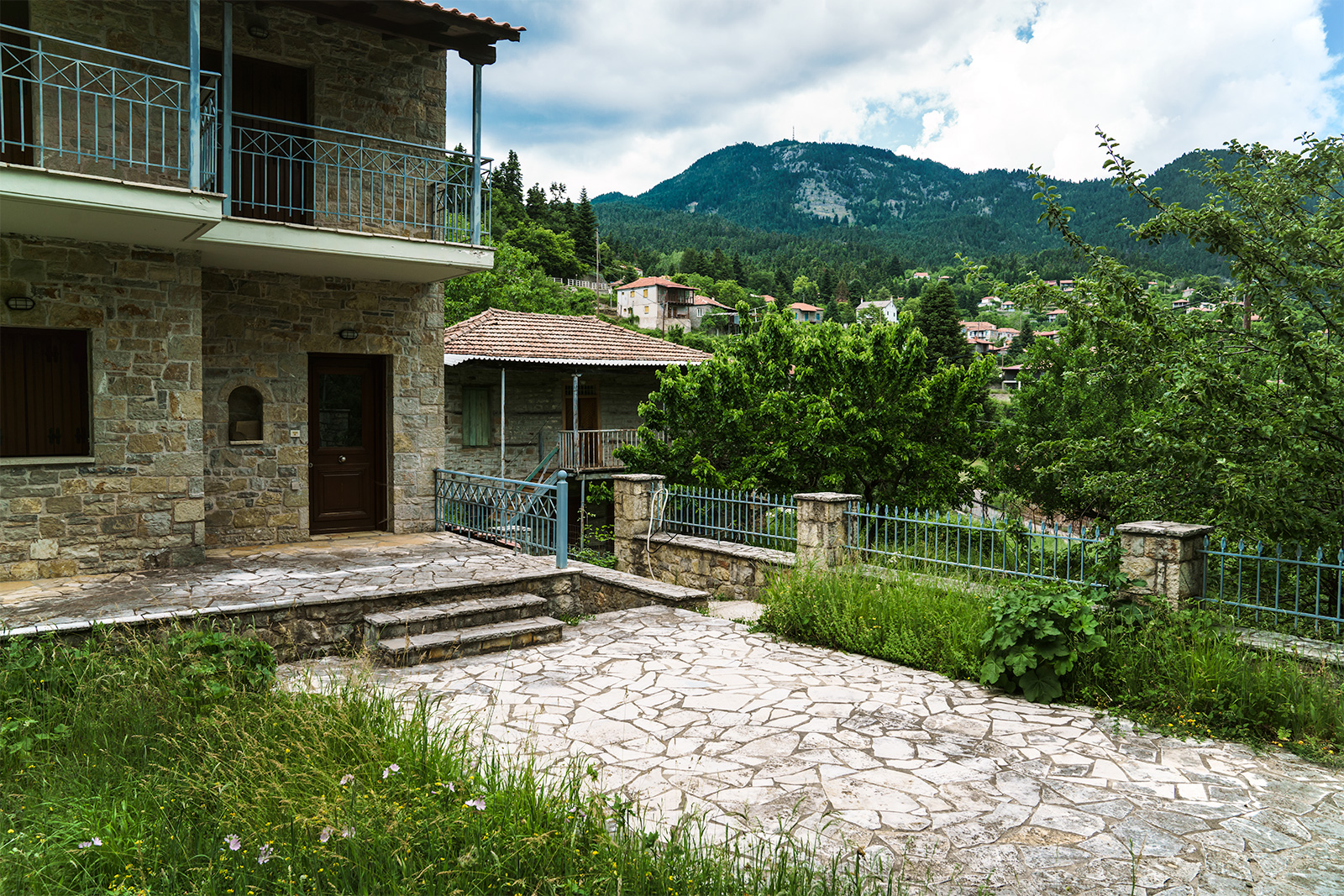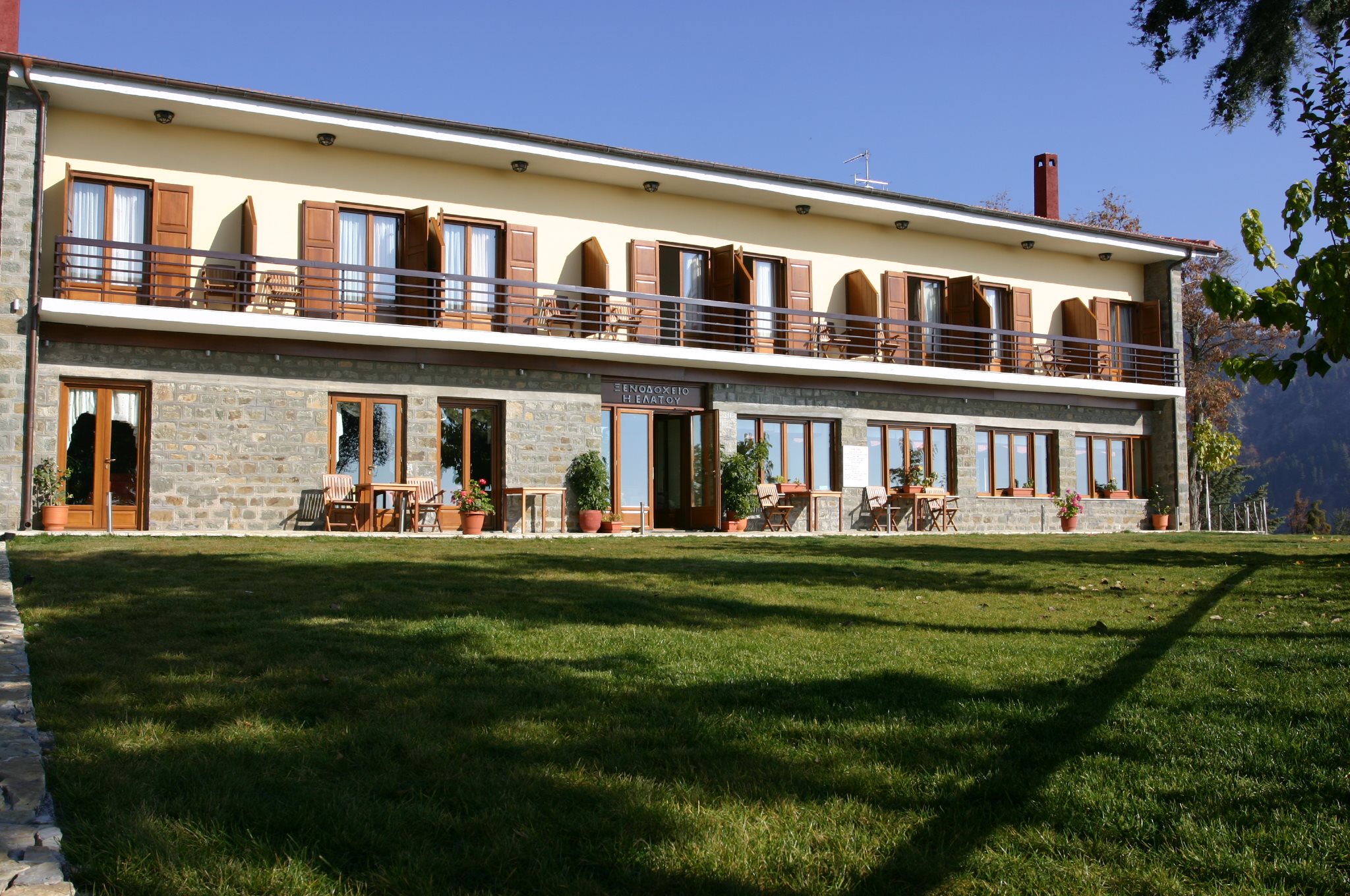It may not be among the most famous villages of the mountainous Nafpaktia region, but Elatou is not unknown, as it has recently begun to emerge both as a retreat, and as a base for excursions to the forest paths of the wider region.
Elatou, a small, mountainous village in Aitoloakarnania with 107 permanent residents according to the 2011 census, is built at an altitude of 1,050 meters on the slopes of Mount Kerasovouni (also known as Mount Omalia), at the southern extremities of the Vardousia mountain range. The site has been inhabited since antiquity and remains of buildings of unknown origin have been found at the modern site of Paliochoria; it is possible that they are related to the Aetolian city of Aegition.
As is the case with many other place names in the highlands of Greece, the modern name Elatou obscures the historical roots of the settlement. These were lost in Byzantine times, when the area was colonized by Slavs, who founded Eletsou (or Eletzou) here – a name not relating to the fir trees of the surrounding area, but meaning “Sunshine“. Elatou appeared much later, with the official Greekizations of 1928. It is worth noting, however, that the original location of the village was in a different place; the inhabitants rebuilt it in its present location after it was burnt down by bandit groups of Turkalvans in 1820.
Arriving in Elatou
Elatou is 49 km from Nafpaktos and is easily accessible by car – the road to Evpalios ascends to the bridge of Mornos and the junction for Lidoriki, which then heads towards Limnitsa and Terpsithea. After the latter, the surrounding forest landscape changes dramatically as fir trees begin to dominate, and the first houses of the village come into view.
The locals are not indifferent to the development of tourism, but at the same time they enjoy the somewhat isolated character of their village. Visitors to Elatou will find a picturesque mountain village with attractive stone houses, a tranquil day-to-day life, much peace and quiet, all surrounded by a dense forest with fir, oak, plane and chestnut trees, but also by running water – don’t miss the fountain known as “Karopoula“.
Staying for a couple of days will give you ample time to go on rambles in the surrounding area, where you may encounter deer, foxes, rabbits, even wild boars, then take off for excursions to Ano Chora or Kryoneria, for example. If you’ve come with a 4×4 vehicle, it is worth asking the locals about the dirt road to Alpochori (Fokida).
The main attraction of the village itself is the church of the Transfiguration of the Saviour, which dominates its centre. It was built in 1864 by craftsmen from Epirus and reflects their renowned masonry style that developed in the 19th century. Its hagiographies and icons are from somewhat later.
In the same year, the school of Elatou was built but it had to be demolished in 1950, having fallen into ruin. A more modern school was built in its place, but that closed in 1968 due to a lack of students as the trend of deserting the Greek villages became more widespread. The building was repurposed as the municipality office, and today it houses the community library.
Elatou is an all year round destination, snow covered in winter and refreshingly cool in summer, but it is spring and autumn that are ideal, with the surrounding nature in all its colourful splendour. In addition to the greenery of the forest, there are also a plethora of flowers, with dahlias, roses, and hydrangeas, while chrysanthemums dominate later in the year with their autumnal hues.
Accommodation-coffee-food
Visitors to Elatou should not expect fancy architecture or extravagant cafes and restaurants; however, the village is not indifferent to tourism, it has simply preferred a model of tempered development.
For those who want to stay in the village, there is the hotel “Elatou“, with 16 comfortable double rooms, all with their own balcony affording lovely views of the surrounding mountain countryside. Here, you can also satisfy your hunger; the village may not have any tavernas, but the on-site restaurant serves up dishes such as rooster stew with macaroni and traditional home-madepies with wild local greens.
Finally, for coffee, there is the single café, which was built following donations from Elatou emigrants in America and it run as a community co-operative. In addition to coffee and tsipouro (a grapa like spirit), it has loukoumi (turkish delight), as well as a what are know as spoon sweets (a small dish with sweet syropy fruit pieces), and in winter it serves a local varient of a ‘hot toddy’, warmed cognac flavoured with cloves.
Read also:
An authentic mountainous destination of ravishing beauty in Greece
Five traditional Airbnbs in magical mountainous Nafpaktia, Greece
Wandering Orini Nafpaktia, Greece –Mountains, rivers and scenic villages



